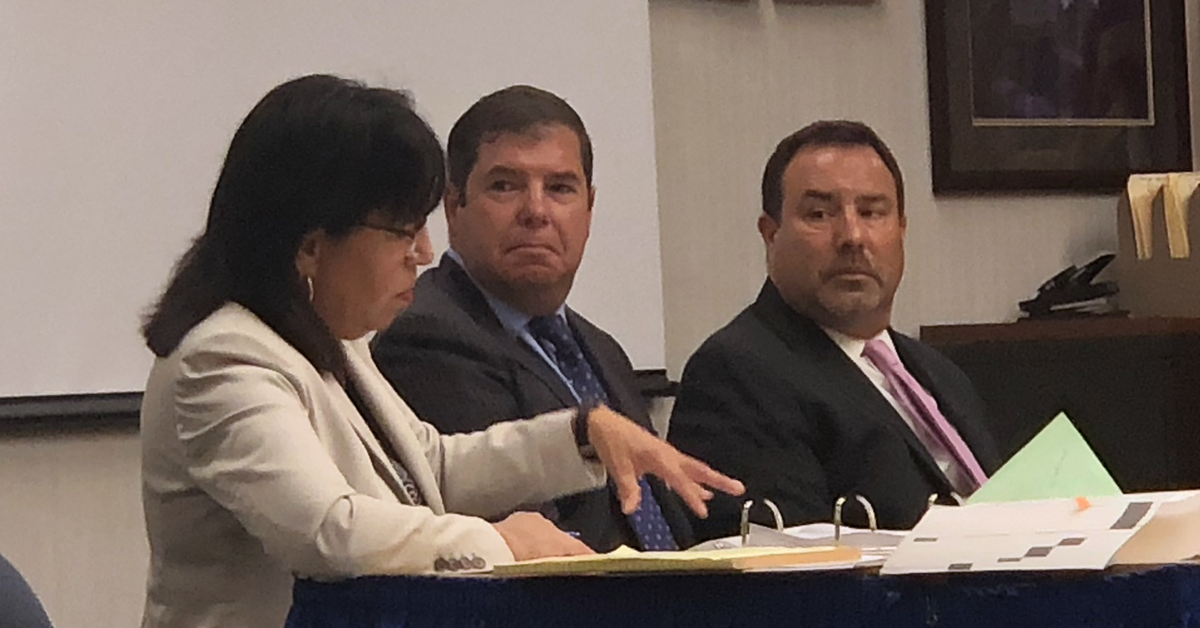Many newspaper reporters of my acquaintance were familiar with a quote attributed to Mark Twain: “The difference between the almost right word and the right word is really a large matter – ‘tis the difference between the lightning bug and the lightning.”
Twain’s wisdom is of public policy import, as Fresno Police Auditor John Gliatta makes clear in his 2018 second quarter report.
At issue is an age-old question: How do we communicate the nature of an event when people can see the same thing differently?
Gliatta, in his own way, tackles this question twice in his report.
Gliatta notes at the beginning of his second quarter report that he had made a series of recommendations in his 2018 first quarter report. He again lists these recommendations, this time including the written responses from the Fresno Police Department.
One of Gliatta’s recommendations deals with body cameras. We all know how the vast and ever-churning digital world is changing our expectations for the availability of truth. In public safety we’ve come to think that if we can just mount a video camera on every cop, then we merely needs to review the video to know what really happened during a controversial incident.
Fresno is part of that unstoppable trend. The Brand Administration, the City Council and Chief Jerry Dyer are doing their best with limited resources to buy enough cameras.
Gliatta’s recommendation (OIS stands for officer-involved shooting): “The OIR recognizes the efforts of the FPD to increase the number of body worn video cameras. To date, the priority has been to have every officer on patrol outfitted with a camera. With the latest approval of funding for the FPD this may soon be accomplished. In view of the high-risk activities of several of the specialized units it is recommended that the next acquisition of cameras be assigned to the specialized units such as SVB-TAC and SRT. In this incident neither of the two SVB-TAC officers, who were closest to the suspect at the time of the OIS, were issued a body worn camera. It was also determined two of the SRT officers with assigned body worn cameras did not activate their cameras during the traffic stop and foot pursuit. However, the officers were not within view of the OIS, but were involved in the traffic stop.”
The Police Department’s response: “Currently, there are approximately 453 body cameras assigned to Department personnel. Due to budgetary constraints, not all personnel have been outfitted with a body camera. The Department has been awarded a grant and has budgeted the required matching funds to purchase 85 more cameras. These 85 cameras will be deployed by late summer, but will still not cover all field and investigative personnel. A portion of the next 85 cameras will be assigned to the SVB tactical team due to the frequent high-risk operations their assignment entails.”
Gliatta’s camera recommendation deals with a specific aspect of operations – how scarce resources could be allocated to ensure the broadest possible video coverage and, therefore, the best chances of determining (by FPD, City Hall and the public) what really happened.
The second of Gliatta’s recommendations that caught my eye also deals with what might be called the operational challenge of police journalism. You see, cops are reporters, too. They write reports about what happened. Lots of them.
Gliatta’s recommendation: “The role of the supervisor when approving reports is not to alter the facts being reported but to ensure the statements being documented are clear and not subject to misinterpretation. If so, the officer should be requested to elaborate or amend the specific statements in order to clarify. Once officer used the term ‘hasty’ two times in his report when describing the operation on his date. The first time it was documented as ‘When I arrived at the location the supervisor briefed our team on a hasty operation.’ The second statement read as follows: ‘I responded to the area of Fresno Ave and Barstow Ave at the direction of the supervisor where he briefed our team on a hasty operation.’ The word hasty is defined as acting with excessive speed or urgency; hurried; sometimes without the necessary care or thought. However, it is possible the officer was describing the meeting itself was hasty due to the limited amount of time instead of the actual operation. The supervisor should have asked the officer to clarify which part was hasty, the meeting or the actual operation? As the final report reads the public perception may be this operation was put together with little or no planning.”
The Police Department’s response: “With regard to the use of subjective terms in police reports, it is expected that officers may be required to fully explain what they meant during subsequent testimony, if it were to come into question. It would be impractical to expect officers to explain every subjective term used in their police reports, although under the circumstances of this serious incident, it may have been appropriate. Witness officers in this case should have been interviewed instead of being directed to complete a police report. This will be addressed as a training issue with investigations personnel.”
I am not criticizing the Police Auditor when I say it’s close to impossible for anyone working with the written word to do so in a fashion that guarantees the finished product is “not subject to misinterpretation.” Chief Dyer and I have locked horns too many times over the years about my writing for me to believe otherwise (we always get the professional relationship back on an even keel).
But Gliatta in his 2018 second quarter report has done his office proud by showing the public yet again just how tough it is to be a cop.
As the Twain quote underscores, it’s hard to write fair, accurate and readable sentences (or “stuff,” as we say in the newsroom, as in “Hey, Pablo, that’s good stuff.”) It’s especially hard to write that way under pressure.
How to do it? Well, time-tested tips help. For example, “hasty” is an adjective. Every good editor preaches to her reporters, “Be careful with adjectives.” I believe short sentences (25 words or less) generally are better than long sentences. A sentence of 50-plus words and three or four commas usually means trouble for writer and reader. It’s a blessing to have an insightful and demanding editor. Cut unnecessary words.
I realize that a police report is different than a newspaper report. Still, be the writer a medical doctor, lawyer, mayor, bureaucrat, cop or journalist, there’s no substitute for clarity. Think of the reader.
Which brings us back to lightning bugs, public safety and transparency. How do cops as writers find the right word in a world full of videos, scrutiny and uncertainty?
My answer is one that the Police Auditor might pass along in a future report.
The late Vic Pellegrino, The Bee’s assistant sports editor some 30 years ago, performed my first performance review at the paper. His first words to me were, “So, tell me what you’re reading.”
Read the best writers. May Mark Twain always be on such a list.









